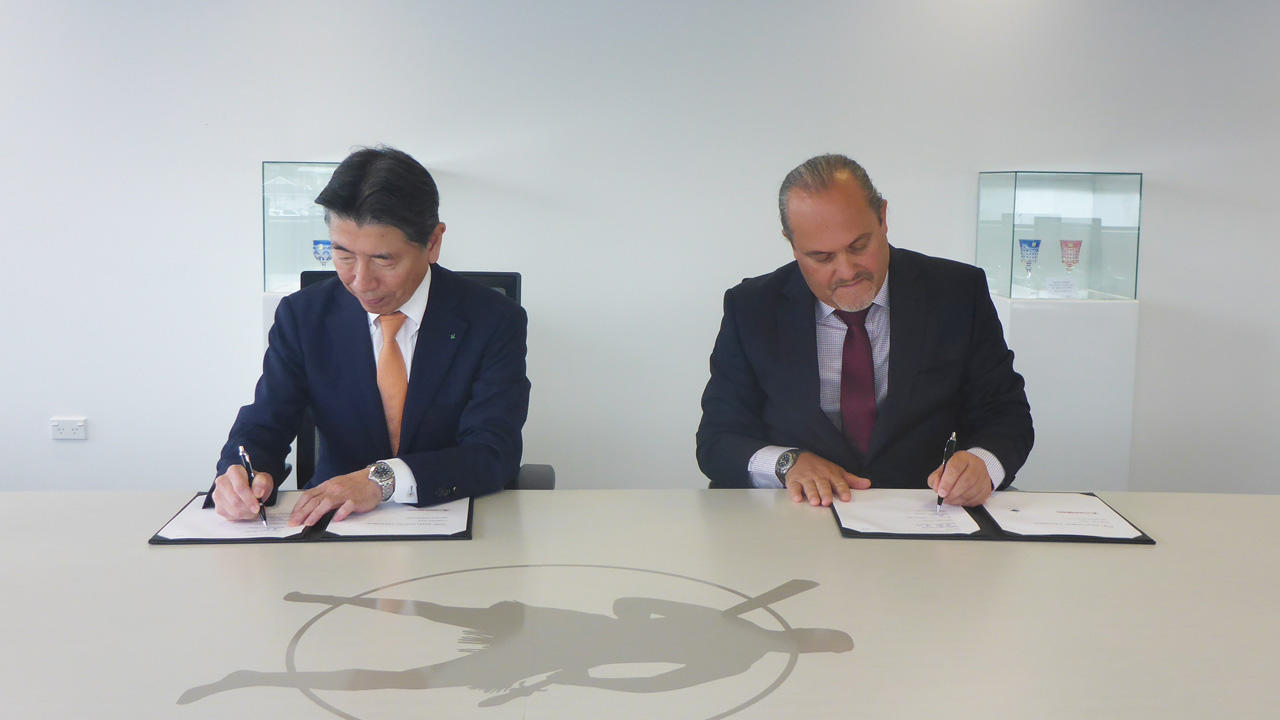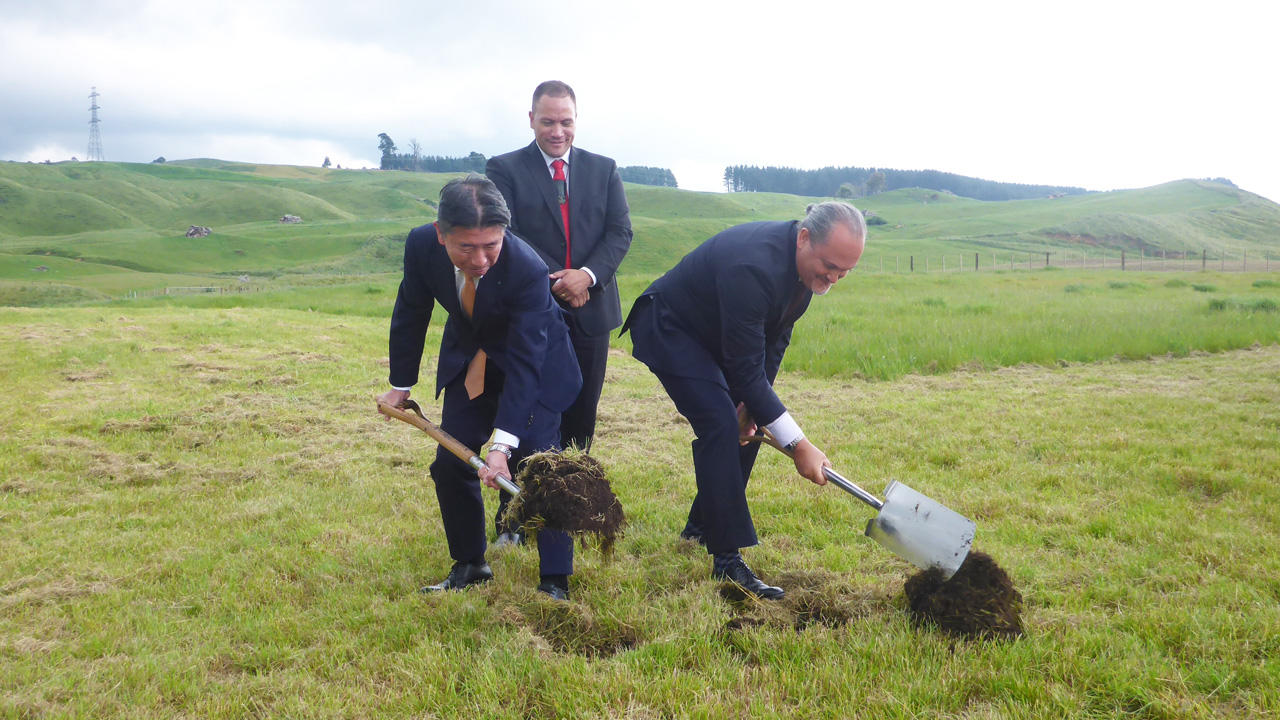Joint development agreement signed with Tuaropaki Trust, will build hydrogen production plant
Proving tests to explore potential for CO2-free hydrogen production business using geothermal energy
-
New Businesses
Obayashi Corporation has signed an agreement with Tuaropaki Trust (*1) of New Zealand on "joint research and development on CO2-free hydrogen production and distribution using geothermal electric power generation in New Zealand." Obayashi Corporation and Tuaropaki Trust have begun building a hydrogen production plant under the agreement.

Much R&D today seeks to spread the use of hydrogen as a next-generation energy source. These efforts have made great advances in the fields of fuel cell vehicles and hydrogen electric power generation. Japan and New Zealand signed a memorandum of cooperation in October 2018 to strengthen collaboration for achieving a hydrogen society. This is one example of how much hope is being placed in hydrogen as a new energy choice.
Energy derived from hydrogen emits no CO2 when it is used. Even so, CO2 is emitted if fossil fuels are used to produce hydrogen. However, replacing fossil fuels with renewable geothermal electric power can produce CO2-free hydrogen, with hardly any CO2 emissions. Thus, geothermal energy can help to reduce overall CO2 emissions. Additionally, geothermal electric power generation is a stable power source, since it is largely unaffected by the weather. As such, it should allow efficient hydrogen production and a stable supply.
Obayashi Corporation and Tuaropaki Trust signed the document, entitled "Memorandum of Understanding on the Joint Research & Development Project on the Production of Hydrogen and Development of its Supply Chain in New Zealand," in December 2017. The parties have subsequently discussed conditions for R&D under the memorandum, such as how the joint R&D will be conducted. They more recently officially concluded the agreement on joint R&D. They also held a ground-breaking ceremony for the hydrogen production plant that will use electric power from a geothermal power plant owned by Tuaropaki Trust. The planned output of the plant is 1.5 MW. The plant is scheduled to be completed in 2020.

After the plant is completed, it will be used to conduct social implementation research. The research will aim to form a complete supply chain. This would include each stage from producing about 100 tons of CO2-free hydrogen annually (*2) to distribution within New Zealand. The research effort will develop expertise for each of those stages. The research will also provide a chance to assess economic and environmental considerations in the supply chain. It will furthermore develop operating and management systems and study the feasibility of future commercial operation.
- *1 Tuaropaki Trust A trust owned by the indigenous Maori people of New Zealand. The Tuaropaki Trust has developed one of New Zealand's largest geothermal power plants. It has operated such plants stably since 2000. Operation by the trust emphasizes sustainable use of resources. The geothermal power, steam, and heat exhaust from these power generation facilities are also put to agribusiness uses. These include the processing of dairy products and greenhouse cultivation.
- *2 Production of 100 tons of hydrogen annually One kg of hydrogen can fuel about 100 km of driving in a fuel cell vehicle (FCV). Annual production of 100 tons of hydrogen would fuel 1,000 FCVs that are each driven 10,000 km annually.

